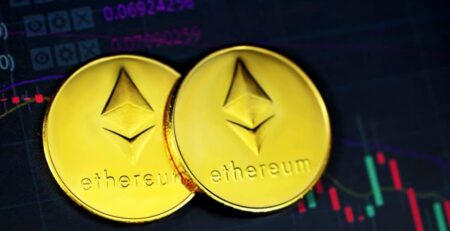Ethereum ($ETH) Merge FAQ: Everything You Wanted To Know but Were Afraid To Ask
[ad_1]
This article tries to answer all the questions that $ETH HODLers might have regarding (perhaps) the most significant upgrade in blockchain history.
What Is the Merge?
Here is how Ethereum Foundation explains the Merge:
“The Merge represents the joining of the existing execution layer of Ethereum (the Mainnet we use today) with its new proof-of-stake consensus layer, the Beacon Chain. It eliminates the need for energy-intensive mining and instead secures the network using staked ETH. A truly exciting step in realizing the Ethereum vision – more scalability, security, and sustainability.
“It’s important to remember that initially, the Beacon Chain shipped separately from Mainnet. Ethereum Mainnet – with all it’s accounts, balances, smart contracts, and blockchain state – continues to be secured by proof-of-work, even while the Beacon Chain runs in parallel using proof-of-stake. The approaching Merge is when these two systems finally come together, and proof-of-work is replaced permanently by proof-of-stake.
“Let’s consider an analogy. Imagine Ethereum is a spaceship that isn’t quite ready for an interstellar voyage. With the Beacon Chain, the community has built a new engine and a hardened hull. After significant testing, it’s almost time to hot-swap the new engine for the old mid-flight. This will merge the new, more efficient engine into the existing ship, ready to put in some serious lightyears and take on the universe.“
Why Is the Merge Important?
There are three main reasons:
- to make the Ethereum network use much less energy
- to make the Ethereum network more secure
- to prepare the Ethereum network for future protocol upgrades (such as sharding)
Here is what Etheruem Foundation has to say about the upcoming change in Ethereum’s energy consumption:
“Ethereum’s energy consumption will be reduced by ~99.95% following The Merge from proof-of-work (PoW) to proof-of-stake (PoS). After The Merge, Ethereum will use dramatically less carbon to be more secure.
“Since its inception, Ethereum has aimed to implement a proof-of-stake consensus mechanism, but doing this without compromising Ethereum’s vision of being a secure, scalable, and decentralized blockchain has taken years of focused research and development.
“Therefore, the network started by using proof-of-work consensus. Proof-of-work consensus requires miners to use their computing hardware to solve a puzzle. The solution to the puzzle proves that energy has been expended by the miner, demonstrating that they invested real-world value for the right to add to the blockchain.
“Both proof-of-work and proof-of-stake are just mechanisms to decide who gets to add the next block. Swapping proof-of-work for proof-of-stake, where the real-world value invested comes from ETH staked directly in a smart contract, removes the need for miners to burn energy to add to the blockchain. Therefore, the environmental cost of securing the network is drastically reduced.“
When Is the Merge Happening?
On 24 August 2022, Ethereum Foundation made an interesting announcement on its blog regarding the date for the Merge.
Ethereum Foundation first explained how the Merge differs from previous Ethereum protocol upgrades (or hard forks):
“The Merge is different from previous network upgrades in two ways. First, node operators need to update both their consensus layer (CL) and execution layer (EL) clients in tandem, rather than just one of the two. Second, the upgrade activates in two phases: the first, named Bellatrix, at an epoch height on the Beacon Chain, and the second, named Paris, upon hitting a Total Difficulty value on the execution layer.“
The Merge “must first be activated on the Beacon Chain with the Bellatrix upgrade,” which is scheduled for epoch 144896 on the Beacon Chain, i.e. 11:34:47am UTC on 6 September 2022. Then, “the proof-of-work chain will migrate to proof-of-stake upon hitting a specific Total Difficulty value,” which is 58750000000000000000000, and expected to happen between September 10 and September 20.
What Are the Risks of the Merge?
Ethereum’s core developers have successfully performed the full Merge upgrade on multiple testnets, and so everything should go smoothly. However, even if there are any technical glitches when the Merge upgrade is carried out on the Ethereum Mainnnet (the Ethereum blockchain that is storing data about every transaction since genesi, no transactions or user funds should be lost (since all of this data is backed up), and Ethereum’s core developers should be able to fix any issues fairly quickly.
Do $ETH Holders Need To Do Anything To Prepare for the Merge?
No. So, if anyone offers to help you to prepare your Ethereum wallet(s) for the Merge, it is extremely likely that you are talking to a scammer.
How Much Faster Will the Ethereum Network Become After the Merge?
There will be only be a slight increase in the speed of the network since the time to process a new block is decreasing from 13 seconds to 12 seconds.
How Much Cheaper Will Ethereum Transactions Become After the Merge?
This upgrade does not address the problem of high gas fees when the Ethereum network gets very busy.
Will the Merge Affect Ethereum’s Tokenomics? If so, how?
First of all, as ConsenSys recently point out, “the Merge will not create a new ETH2 token and people should not be “sending ETH to anyone in attempts to upgrade to ETH2.“
In the August 2022 issue of Pantera’s monthly newsletter (which is called “Pantera Blockchain Letter”), Erik Lowe, Head Of Content at Pantera Capital, explained the effect of the Merge on $ETH issuance and supply:
“If you were wondering why the event is called ‘The Merge’, it is in reference to the ‘merging’ of the Ethereum Mainnet (execution layer) with the Beacon Chain (consensus layer) that has been running in parallel since December 2020. The Ethereum that facilitates our DeFi transactions today is the execution layer, which runs on Proof-of-Work. The Beacon Chain utilizes Proof-of-Stake. The merging of the two is when Ethereum transitions to Proof-of-Stake. So how does this relate to issuance and supply?
“Currently, the issuance of new Ethereum is about 14,600 ETH/day, which is the aggregate of 13,000 ETH from mining rewards on Mainnet and 1,600 ETH from staking rewards on the Beacon Chain. After ‘The Merge’, there will be no Proof-of-Work and thus no mining rewards, leaving just 1,600 ETH/day in staking rewards.
“A year ago, the London upgrade went live, which introduced a minimum fee (known as a base fee) for every transaction to be considered valid. That fee is then burned, resulting in approximately 1,600 ETH removed from the total supply each day based on an average gas price of 16 gwei, according to the Ethereum website. (A gwei is one-billionth of one ETH.)
“After ‘The Merge’, Ethereum’s issuance rate of 1,600 ETH/day in staking rewards minus the fees burned nets out to zero. Subtracting penalties incurred by validators (e.g. getting slashed for misbehaving) and ETH that is lost over time, this would make Ethereum issuance net negative. In the context of today’s inflationary environment, Ethereum’s shift towards a potentially deflationary asset is an exciting prospect.“
As for staked $ETH, after the Merge, it will stay locked, and withdrawals will only be possible once Ethereum has had the Shanghai upgrade.
Here is Ethereum Foundation’s explanation:
“Staked ETH, staking rewards to date, and newly issued ETH immediately after The Merge will still be locked on the Beacon Chain without the ability to withdraw.
“Withdrawals are planned for the Shanghai upgrade, the next major upgrade following The Merge. This means that newly issued ETH, though accumulating on the Beacon Chain, will remain locked and illiquid for at least 6-12 months following The Merge.“
Image Credit
Featured Image via Pixabay
[ad_2]
Source link












Leave a Reply